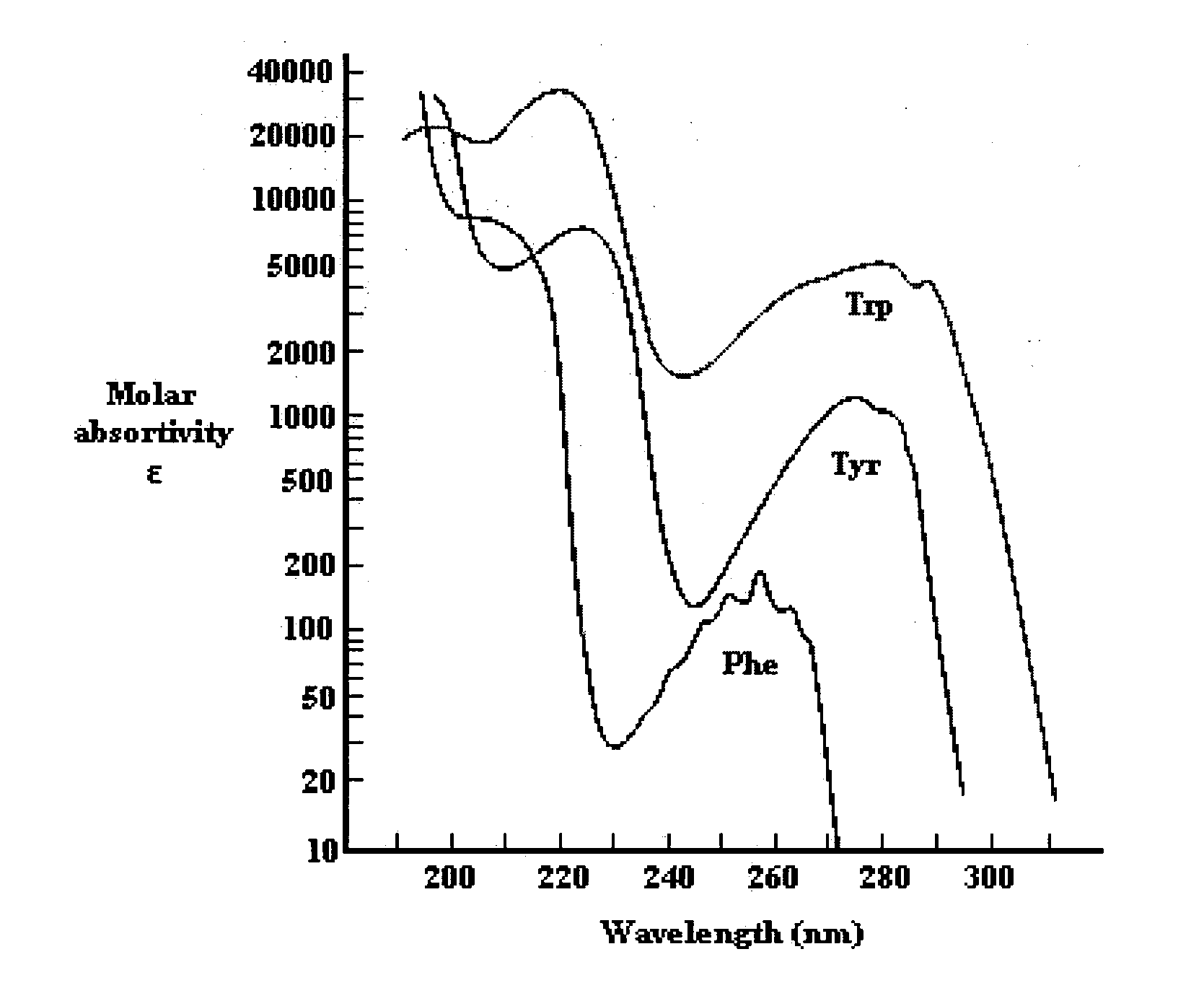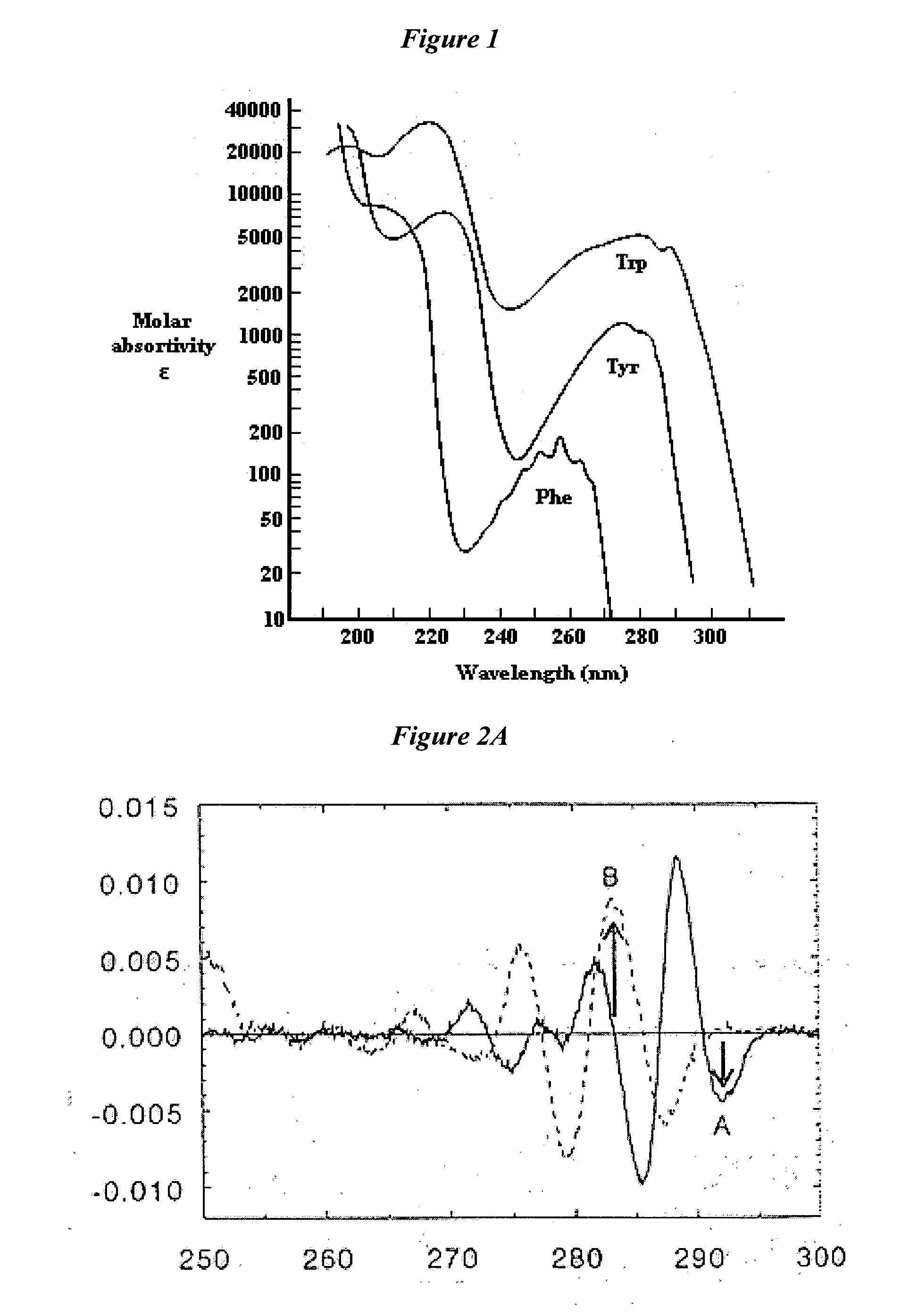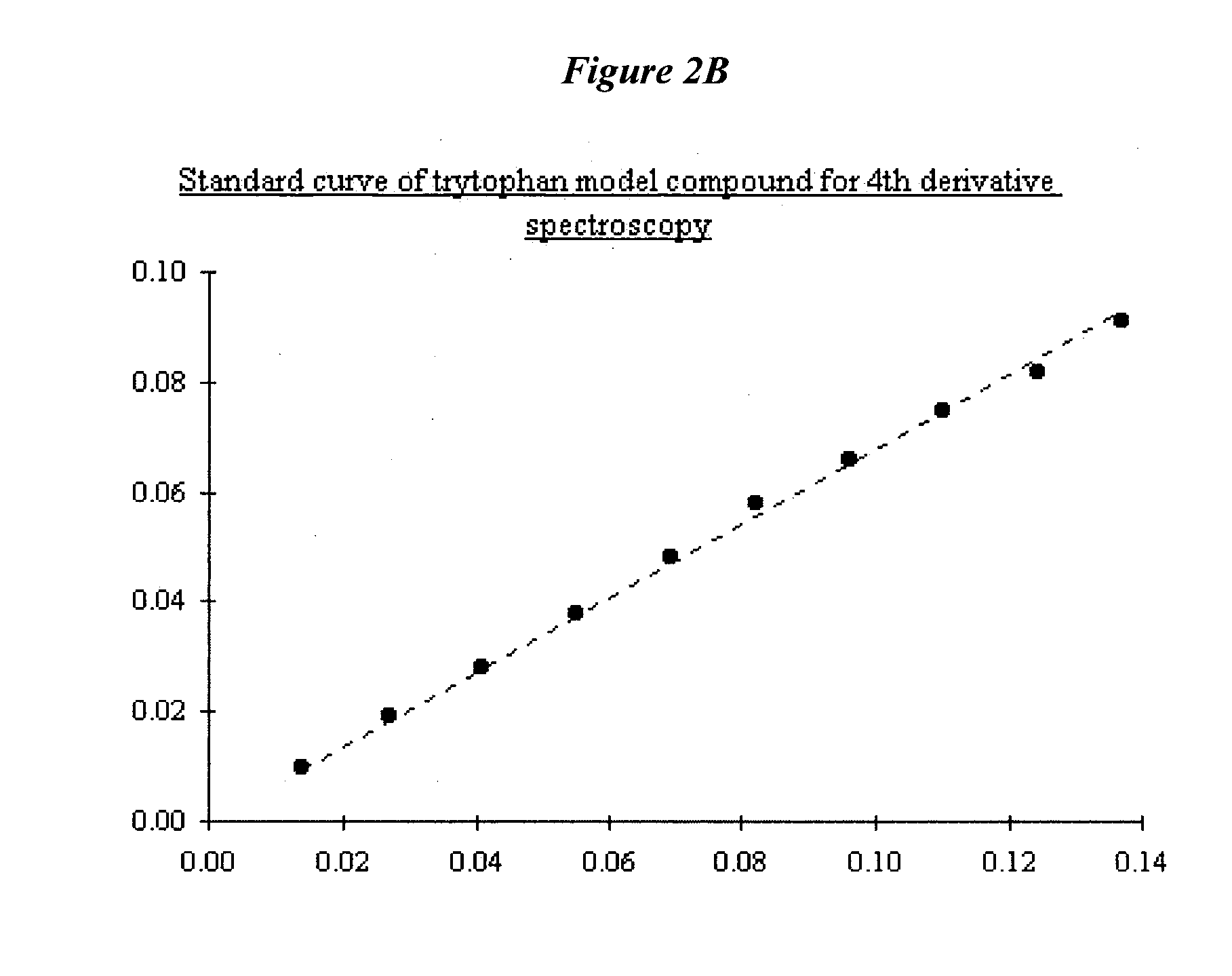Analysis of mixtures including proteins
a technology of protein and mixture, applied in the field of analysis and quality control of mixtures including proteins, can solve the problems of increasing the level of uncharacterized breakdown products, reducing the effective dose of immunogenic conjugates, etc., and achieves the improvement of the ability to detect trace components, improve the accuracy or measurement of analyte, and reduce background amplitude from sample to sample.
- Summary
- Abstract
- Description
- Claims
- Application Information
AI Technical Summary
Benefits of technology
Problems solved by technology
Method used
Image
Examples
4 example 10c
[0221]FIG. 89 shows a far UV CD spectra of NadAΔ351-405
[0222]FIG. 89A shows the spectra of clinical phase II and III NadAΔ351-405, superimposed to the spectra of a thermally denatured sample. Analyses were carried out between 260-180 nm at RT, approximately 0.1 mg / ml protein solution, with 1 mm optical path length, band-width of 1 nm, and buffer subtraction.
[0223]FIG. 89B shows a far UV CD data comparison for different clinical phase lots.
[0224]FIG. 89C shows CD spectra deconvolution by Yang algorithm; the fractional percentage of the secondary structure had been calculated by computer fitting to a library of known CD protein spectra.
5 example 10d
[0225]FIG. 90 shows a fluorescence emission spectra of NadAΔ351-405. Normalized emission spectra are shown for native NadAΔ351-405, thermally denatured protein and L-tyrosine in solution. Spectra were recorded at RT, in 1 cm path length quartz cell on solution containing approximately 0.4 mg / ml; excitation wavelength 280 nm. Emission spectra were registered between 290 and 390 nm; each spectrum was averaged on 3 different scanning at 50 nm / min speed.
6 Example 10E
[0226]FIG. 91 shows a SEC-HPLC profile of NadAΔ351-405 Dimensional separation was performed on a TSK G3000SW×1 column; the large majority of NadAΔ351-405 material eluted as a single tailed peak, accompanied by a minor peak at lower retention time. Peak homogeneity is assessed by spectral comparison of all the spectra slices within the single peak. Spectra constituting the NadAΔ351-405 major peak present a maximum absorption at 275.9 nm and are perfectly superimposed, including the ones of the peak shoulder area, indicating t...
example 1
Spectroscopic Analysis of CRM197 Lots
Samples
[0244]Table 1 lists the CRM197 lots analyzed and the dilution rate applied in the experiments.
TABLE 1Protein conc.Sample targetFinal sampleProtein inCRMsample to obtainNearest CRMReal sample% of differenceCRM bulkvia microBCAconcentrationvolumefinal volumefinal volume at tagetsampleableconcentrationfrom targetlot. N.(mcg / mcl)(mcg / mcl)(mcl)(mcg)concentration (mcl)volume (mcl)(mcg / mcl)conc.3947.400.5100050010.5485232110.540.499596−0.08084151.700.510005009.6711798849.680.5004560.09124256.100.510005008.9126559718.920.5004120.08244454.900.510005009.1074681249.100.49959−0.0824648.000.5100050010.4166666710.420.500160.032TRUN0543.600.5100050011.4678899111.460.499656−0.0688TRUN0638.200.5100050013.0890052413.080.499656−0.0688TRUN0746.300.5100050010.7991360710.800.500040.0085CRF1543.850.5100050011.4025085511.400.49989−0.022
[0245]The lots were produced on three different manufacturing sites. Lots 39, 41, 42, 44 and 46 were produced on Site 1; lots TRU...
PUM
| Property | Measurement | Unit |
|---|---|---|
| wavelength | aaaaa | aaaaa |
| wavelength | aaaaa | aaaaa |
| electromagnetic spectroscopy | aaaaa | aaaaa |
Abstract
Description
Claims
Application Information
 Login to View More
Login to View More - R&D
- Intellectual Property
- Life Sciences
- Materials
- Tech Scout
- Unparalleled Data Quality
- Higher Quality Content
- 60% Fewer Hallucinations
Browse by: Latest US Patents, China's latest patents, Technical Efficacy Thesaurus, Application Domain, Technology Topic, Popular Technical Reports.
© 2025 PatSnap. All rights reserved.Legal|Privacy policy|Modern Slavery Act Transparency Statement|Sitemap|About US| Contact US: help@patsnap.com



